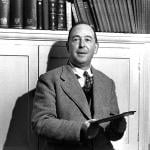On the web site for the film Doubt, writer and director John Patrick Shanley explains that, for him, doubt is not the absence of faith, but rather a stage of experience the faithful may go through, from which they emerge with a new kind of faith. Though in Shanley’s film, doubt and faith revolve around questions about human nature rather than questions about the existence of God, Doubt raises important questions about how those with religious convictions should relate to the world in a time of change.
Some summaries of Doubt may lead one to believe that the film (and the award-winning play, also written by Shanley, from which it was adapted) is about the sex abuse scandal among Catholic priests. While the plot is driven by the question of whether Father Flynn did or didn’t molest a boy at St. Nicholas School, the film, more than anything else, is about Vatican II. Because American Protestants, as fractured into denominations as we are, have never experienced a seismic shift quite like Vatican II, it may be difficult for many of us to grasp how thoroughly it shapes the world of Doubt, which takes places in 1964 (the Second Vatican Council convened between 1962 and 1965).
In Doubt, Father Flynn embodies many of the Vatican II reforms. He believes that the church should present a “friendly” face, that the clergy should be more like family members to their congregants, and that popular music should be incorporated into the Christmas pageant. He preaches rather shallow sermons with a more horizontal (concerned with relationships among humans) than vertical (concerned with God and his relationship to humanity) emphasis, in order to make his message more practical and relatable. He also may or may not be a child molester.
On the other hand, Sister Aloysius of the Sisters of Charity, the principal of St. Nicholas School, represents a more pre-Vatican II, hierarchical relationship between the religious and the lay people. She believes that structure, discipline, and fountain pens (as opposed to those new-fangled ballpoint things) are in the schoolchildren’s best interest. She genuinely cares about the children, but she is not what you might call touchy-feely.
Caught in between these two characters, between these two eras of the Catholic Church, is Sister James, a young, somewhat naïve nun who has a warmer personality than that of Sister Aloysius, but who is also (perhaps rightfully) suspicious of the way Father Flynn relates to the boys at the school. Sister James represents all Catholics, lay and religious, who had to find their way to a new expression of faith after Vatican II.
Doubt, as a play, is subtitled “A Parable,” which indicates that it’s not exactly intended to be subtle. However, its characters are intended to be fully realized people, as well as symbols, and this is where the movie version fails, largely due to Meryl Streep’s portrayal of Sister Aloysius as a mean, cranky nun with an inconsistent Boston accent. Because she plays the role exactly like a composite stereotype from parochial school nightmares, the movie doesn’t quite achieve its intended ambiguity. Most audience members will probably have more sympathy with Father Flynn and believe his version of events, simply because Streep turns her character into a bitter “old dragon” (Streep’s own words, from an interview).
Yet part of Shanley’s intent in the play was to pay tribute to the Sisters of Charity, who really taught him as a young boy. He dedicated Doubt “to the many orders of Catholic nuns who have devoted their lives to serving others in hospitals, schools, and retirement homes. Though they have been much maligned, who among us has been so generous?” Shanley has also said in interviews that he sympathizes a good deal with Sister Aloysius, even in her condemnation of ballpoint pens (because, as he and she point out, penmanship is a dying art). Beautiful things often have to be sacrificed for change—even good and needed change—to happen, he acknowledges, but that doesn’t mean we shouldn’t pause to shed a tear for their loss.
Shanley is not some Latin-only Mass enthusiast, and he seems to be in sympathy with many of the changes in the Catholic Church (for example, abolition of some of the hierarchical structures that severely restricted the freedoms of nuns in comparison to monks and priests). Doubt does not oppose all change or say that those who favor it are all child-molesters; rather, it suggests that change is a difficult, but necessary part of faith.
Yet there is also a warning that, for the sake of “friendliness” and “accessibility,” we may sacrifice some of the church’s essentials. Vatican II basically dealt with the same question that many Protestants congregations and denominations face today: How can the church change in ways that represent Jesus’ incarnational relationship to contemporary culture—and yet still retain the truly good news that Jesus can and does transform our hearts, leading us away from sinful ways?











